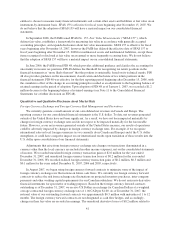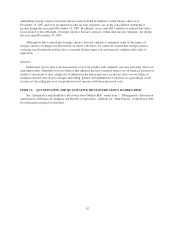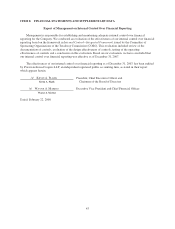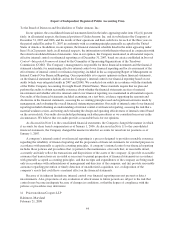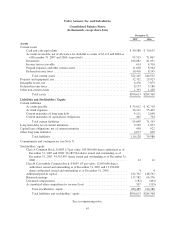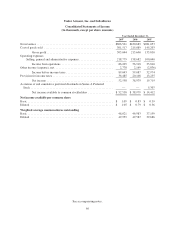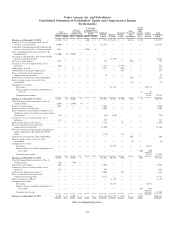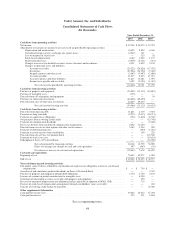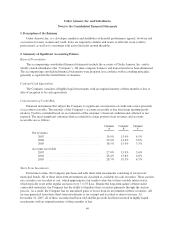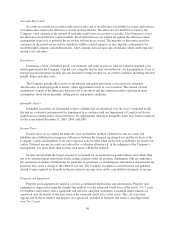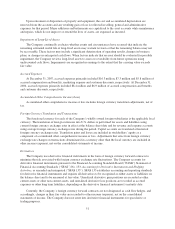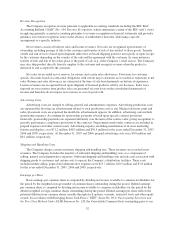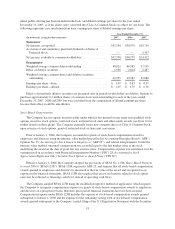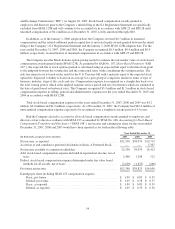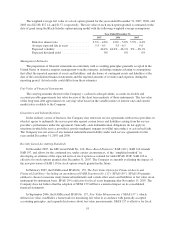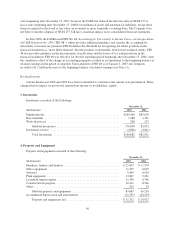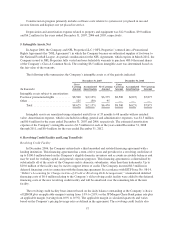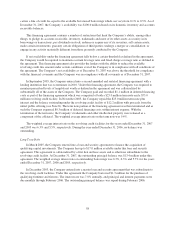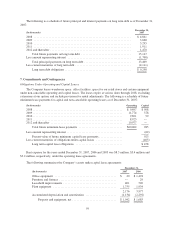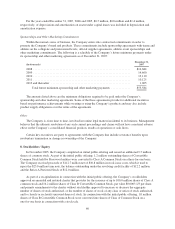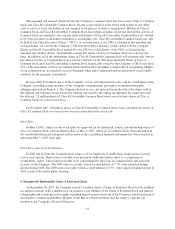Under Armour 2007 Annual Report Download - page 61
Download and view the complete annual report
Please find page 61 of the 2007 Under Armour annual report below. You can navigate through the pages in the report by either clicking on the pages listed below, or by using the keyword search tool below to find specific information within the annual report.Upon retirement or disposition of property and equipment, the cost and accumulated depreciation are
removed from the accounts and any resulting gain or loss is reflected in selling, general and administrative
expenses for that period. Major additions and betterments are capitalized to the asset accounts while maintenance
and repairs, which do not improve or extend the lives of assets, are expensed as incurred.
Impairment of Long-Lived Assets
The Company continually evaluates whether events and circumstances have occurred that indicate the
remaining estimated useful life of long-lived assets may warrant revision or that the remaining balance may not
be recoverable. These factors may include a significant deterioration of operating results, changes in business
plans, or changes in anticipated cash flows. When factors indicate that an asset should be evaluated for possible
impairment, the Company reviews long-lived assets to assess recoverability from future operations using
undiscounted cash flows. Impairments are recognized in earnings to the extent that the carrying value exceeds
fair value.
Accrued Expenses
At December 31, 2007, accrued expenses primarily included $16.3 million, $7.3 million and $5.8 million of
accrued compensation and benefits, marketing expense and customer discounts, respectively. At December 31,
2006, accrued expenses primarily included $8.4 million and $6.9 million of accrued compensation and benefits
and customer discounts, respectively.
Accumulated Other Comprehensive Income (Loss)
Accumulated other comprehensive income or loss includes foreign currency translation adjustments, net of
tax.
Foreign Currency Translation and Transactions
The functional currency for each of the Company’s wholly owned foreign subsidiaries is the applicable local
currency. The translation of foreign currencies into U.S. dollars is performed for assets and liabilities using
current foreign currency exchange rates in effect at the balance sheet date and for revenue and expense accounts
using average foreign currency exchange rates during the period. Capital accounts are translated at historical
foreign currency exchange rates. Translation gains and losses are included in stockholders’ equity as a
component of accumulated other comprehensive income or loss. Adjustments that arise from foreign currency
exchange rate changes on transactions denominated in a currency other than the local currency are included in
other income (expense), net on the consolidated statements of income.
Derivatives
The Company uses derivative financial instruments in the form of foreign currency forward contracts to
minimize the risk associated with foreign currency exchange rate fluctuations. The Company accounts for
derivative financial instruments pursuant to the Financial Accounting Standards Board (“FASB”) Statement of
Financial Accounting Standards (“SFAS”) No. 133, Accounting for Derivative Instruments and Hedging
Activities, as amended and interpreted (“SFAS 133”). SFAS 133 establishes accounting and reporting standards
for derivative financial instruments and requires all derivatives to be recognized as either assets or liabilities on
the balance sheet and to be measured at fair value. Unrealized derivative gain positions are recorded as other
current assets or other non-current assets, and unrealized derivative loss positions are recorded as accrued
expenses or other long term liabilities, depending on the derivative financial instrument’s maturity date.
Currently, the Company’s foreign currency forward contracts are not designated as cash flow hedges, and
accordingly, changes in their fair value are recorded to other income (expense), net on the consolidated
statements of income. The Company does not enter into derivative financial instruments for speculative or
trading purposes.
51


